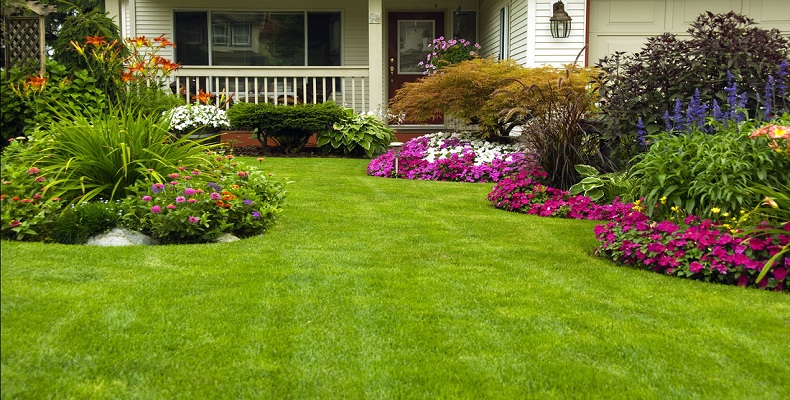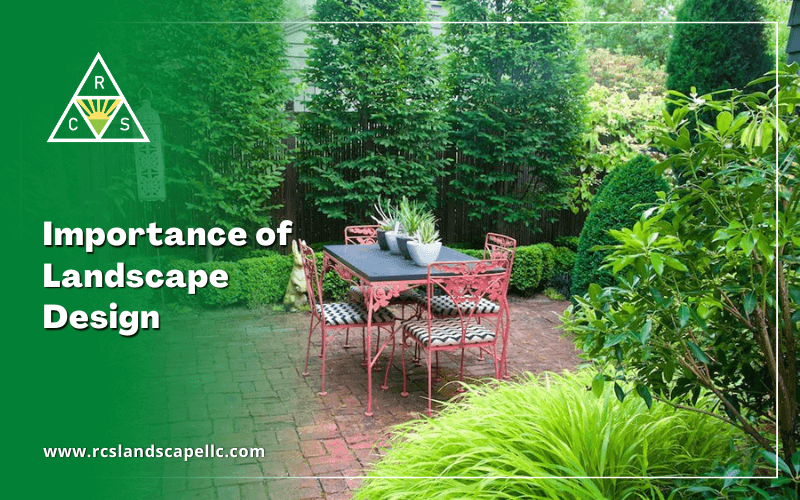The Ultimate Guide To Landscape Design
The Ultimate Guide To Landscape Design
Blog Article
Not known Details About Landscape Design
Table of ContentsThe Of Landscape DesignIndicators on Landscape Design You Need To KnowSome Known Details About Landscape Design What Does Landscape Design Mean?
When developing a household landscape, one of the most vital action is to put a plan on paper. Developing a master plan will conserve you money and time and is a lot more most likely to cause an effective layout. Landscape Design. A master plan is created through the 'style procedure': a detailed technique that takes into consideration the environmental conditions, your wishes, and the components and principles of designThe 5 steps of the style procedure include: 1) performing a website stock and evaluation, 2) determining your requirements, 3) developing functional diagrams, 4) developing theoretical style plans, and 5) attracting a final design plan. The first three actions develop the visual, practical, and gardening requirements for the layout. The last 2 steps after that use those needs to the creation of the final landscape strategy.
This is a crucial step for both plant option and placement and situating household tasks and functions. It is essential due to the fact that the exact same environment problems that affect the plantstemperature, humidity, rain, wind, and sunlightalso influence you, the individual. The next step is to make a checklist of your demands and desiresthis assists you establish exactly how your yard and landscape will be made use of.
The functional diagram is after that made use of to locate the activity spaces on the site and from this diagram a conceptual plan is established - Landscape Design. The last action is a final style that consists of all the hardscape and planting details that are necessary for installation. Throughout the layout procedure there are ten essential things to take into consideration: for plant choice and task area by considering what you want and require to assist determine shapes and organize rooms by marking activity locations and relating to components for both the setting and the individual by using massing and layering techniques such as shift locations and prime focus in the materials, the shades, and the surface structures for the development and upkeep of plants by utilizing lasting design practices A complete inventory and analysis of the site is very important to identify the ecological conditions for plant development and the very best use the website
The 25-Second Trick For Landscape Design
The kind of soil identifies the nutrients and moisture offered to the plants. It is always best to utilize plants that will thrive in the existing soil. Although soil can be changed, change is usually pricey and many times ineffective. Existing vegetation can provide clues to the dirt type. Where plants expand well, note the dirt conditions and utilize plants with similar growing needs.

Sun/shade patterns, the quantity and size of exposure to sun or color (Figure 1), develop microclimates (occasionally called microhabitats). Recording website conditions and existing plants on a base map will certainly disclose the place of microclimates in the yard. Plants usually fall right into 1 or 2 of four microclimate categories-full sunlight, partial shade, shade, and deep shade.
Number 1. Sun and shade patterns. Credit Rating: Gail Hansen, UF/IFAS It is important to keep in mind all the current conditions on a precise base map when doing the site stock (Figure 2). Landscape Design. Utilities such as high-voltage line, septic storage tanks, below ground energies and roofing overhangs determine plant area. Use a surveyor's plat of your residential property for the limits and location of your home.
The Single Strategy To Use For Landscape Design
Spending plan worries consist of the products, initial setup costs and the on-going upkeep costs. Determine the time and money you are ready to place right into preserving the plants and hardscape-be practical try this web-site about your purposes and capability. Figure 3. Existing use areas. Credit: Gail Hansen, UF/IFAS Number 4. Proposed use areas. Credit Report: Gail Hansen, UF/IFAS There are various landscape layout motifs- from easy to complicated, however it is valuable to choose one to direct your plant and product choice.

Choose if you intend to open your backyard, shut your lawn, or a little of both, to these views. Simply put, do you desire the yard to enclose the space around you and connect mostly to your home, or do you want the yard to open sights and look outward, associating to the environments? This will click here to find out more provide you a beginning indicate think of a style.
Our Landscape Design Diaries

This is called "local color", which suggests it fits with the environments. There are both type styles and style themes. Every garden needs to have a form style, however not all yards have a design motif. As a matter of fact, many residential yards have no certain style except to mix with your home by duplicating details from the style such as materials, color, and type.
In a form theme the company and form of the rooms in the backyard is based either on the form of your home, the shape of the locations between your home and the property boundaries, or a preferred form of the home owner. The form theme determines the form and company (the layout) of the spaces and the links in between them.

Report this page